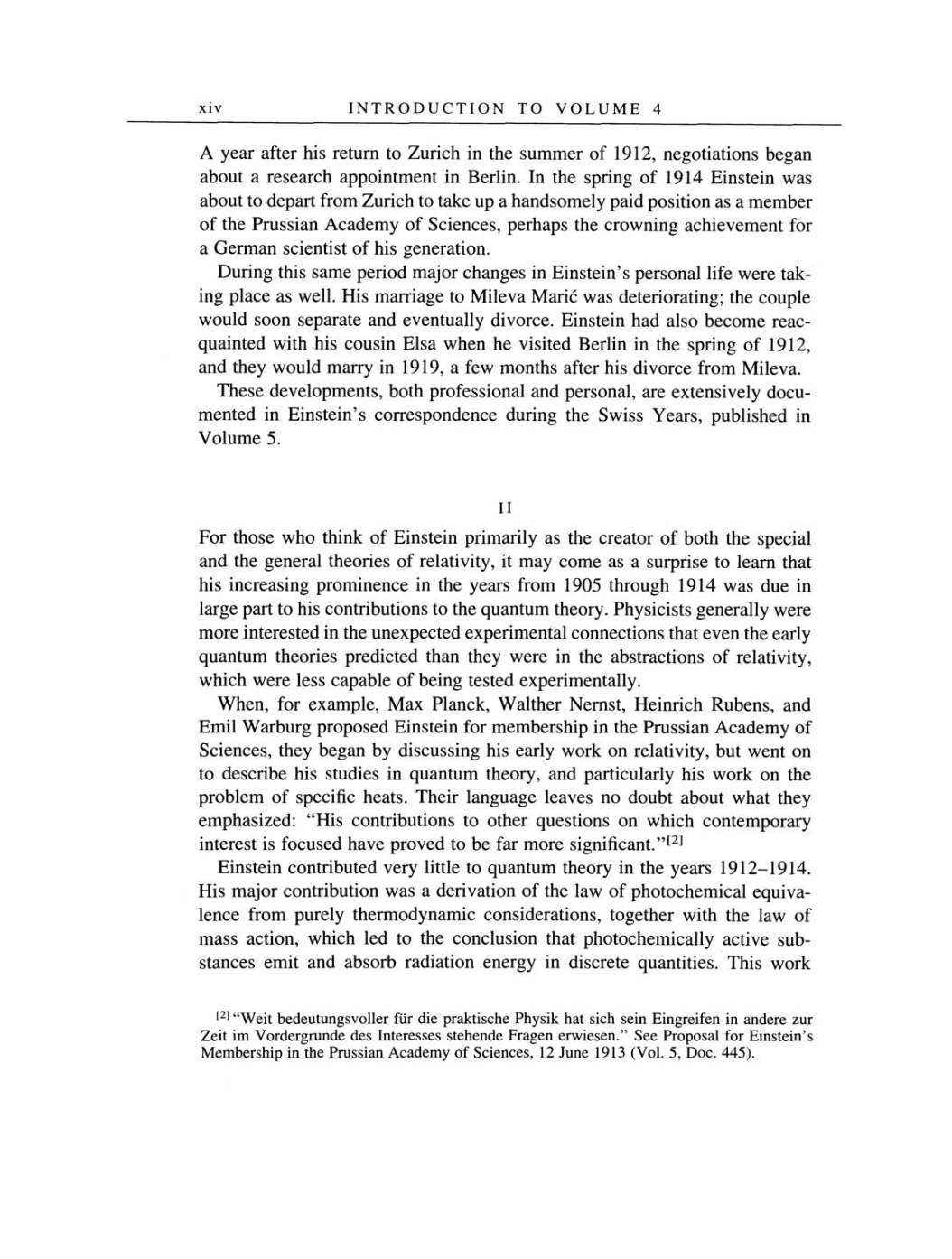xiv INTRODUCTION
TO VOLUME 4
A
year
after his
return to
Zurich
in the
summer
of
1912, negotiations began
about
a
research
appointment
in Berlin. In
the
spring
of
1914
Einstein
was
about
to
depart
from Zurich
to
take
up
a handsomely paid position
as a
member
of
the
Prussian
Academy
of
Sciences,
perhaps
the
crowning
achievement for
a
German scientist of
his
generation.
During
this
same
period major
changes
in Einstein's
personal
life
were
tak-
ing place
as
well.
His
marriage
to
Mileva Maric
was deteriorating;
the
couple
would
soon
separate
and
eventually
divorce. Einstein had
also become
reac-
quainted
with
his
cousin Elsa when he visited Berlin
in
the
spring
of
1912,
and
they
would
marry
in
1919,
a
few months after
his
divorce from
Mileva.
These
developments,
both
professional
and
personal,
are extensively
docu-
mented
in Einstein's
correspondence during
the
Swiss
Years,
published
in
Volume
5.
II
For
those
who
think of
Einstein
primarily
as
the creator
of both
the
special
and
the
general
theories of
relativity,
it
may
come
as
a
surprise
to
learn that
his
increasing prominence
in the
years
from
1905
through
1914
was
due
in
large part
to his
contributions
to the
quantum theory. Physicists generally
were
more
interested
in the
unexpected
experimental
connections that
even
the
early
quantum
theories
predicted
than
they were
in the
abstractions
of
relativity,
which
were
less
capable
of
being
tested
experimentally.
When,
for
example,
Max
Planck,
Walther
Nernst,
Heinrich
Rubens,
and
Emil
Warburg proposed
Einstein for
membership
in the Prussian
Academy
of
Sciences,
they began by discussing
his
early
work
on relativity,
but
went
on
to
describe his studies
in
quantum theory,
and
particularly
his
work
on
the
problem
of
specific
heats. Their
language
leaves
no
doubt about what
they
emphasized:
"His contributions
to
other
questions
on
which
contemporary
interest
is
focused have
proved to
be
far
more significant."[2]
Einstein contributed
very
little
to
quantum theory
in
the
years
1912-1914.
His
major
contribution
was a
derivation of
the
law
of
photochemical
equiva-
lence
from
purely
thermodynamic considerations,
together
with
the
law
of
mass
action,
which led
to the
conclusion that
photochemically
active sub-
stances
emit and absorb radiation
energy
in
discrete
quantities.
This work
[2]"Weit
bedeutungsvoller
für die
praktische Physik
hat sich sein
Eingreifen
in
andere
zur
Zeit im
Vordergrunde
des Interesses stehende
Fragen
erwiesen." See
Proposal
for Einstein's
Membership
in
the Prussian
Academy
of Sciences, 12 June
1913
(Vol. 5,
Doc.
445).
